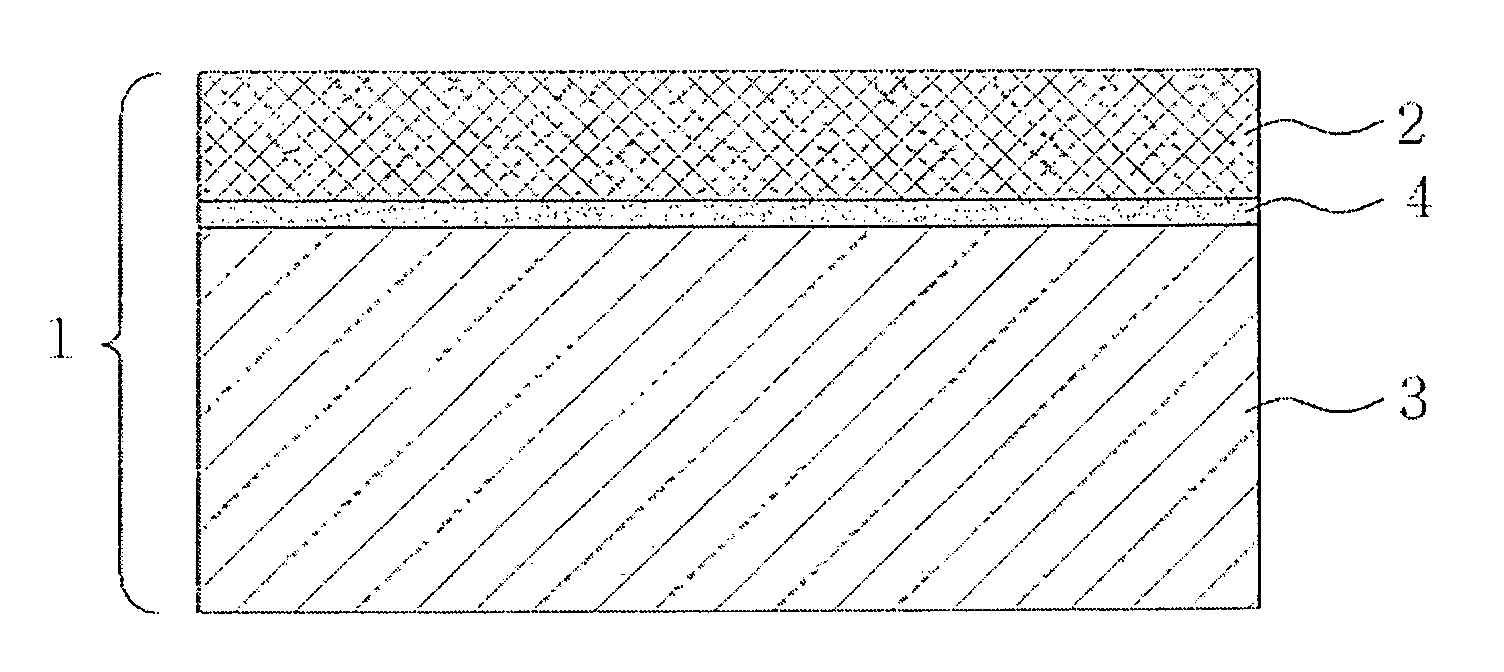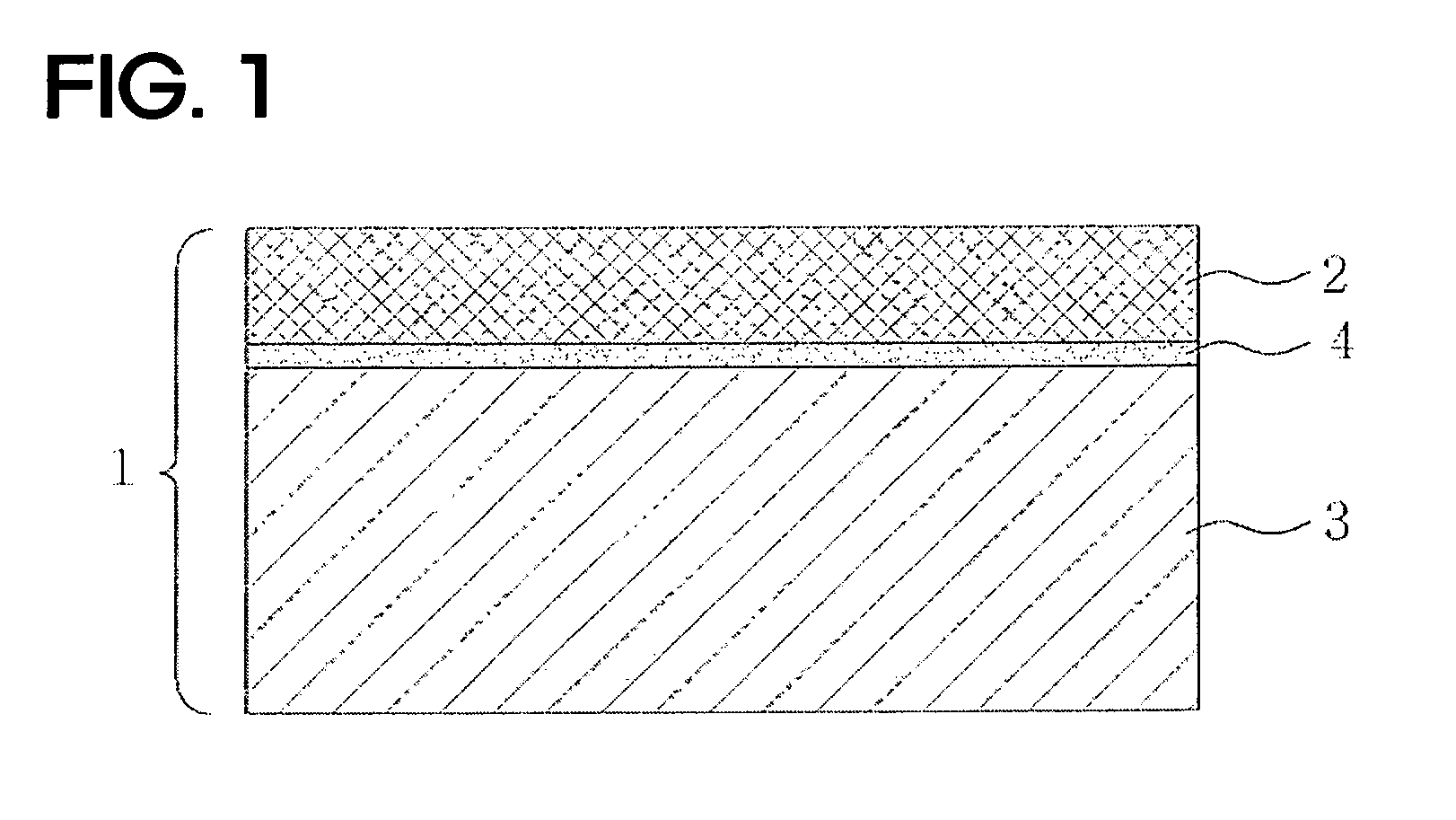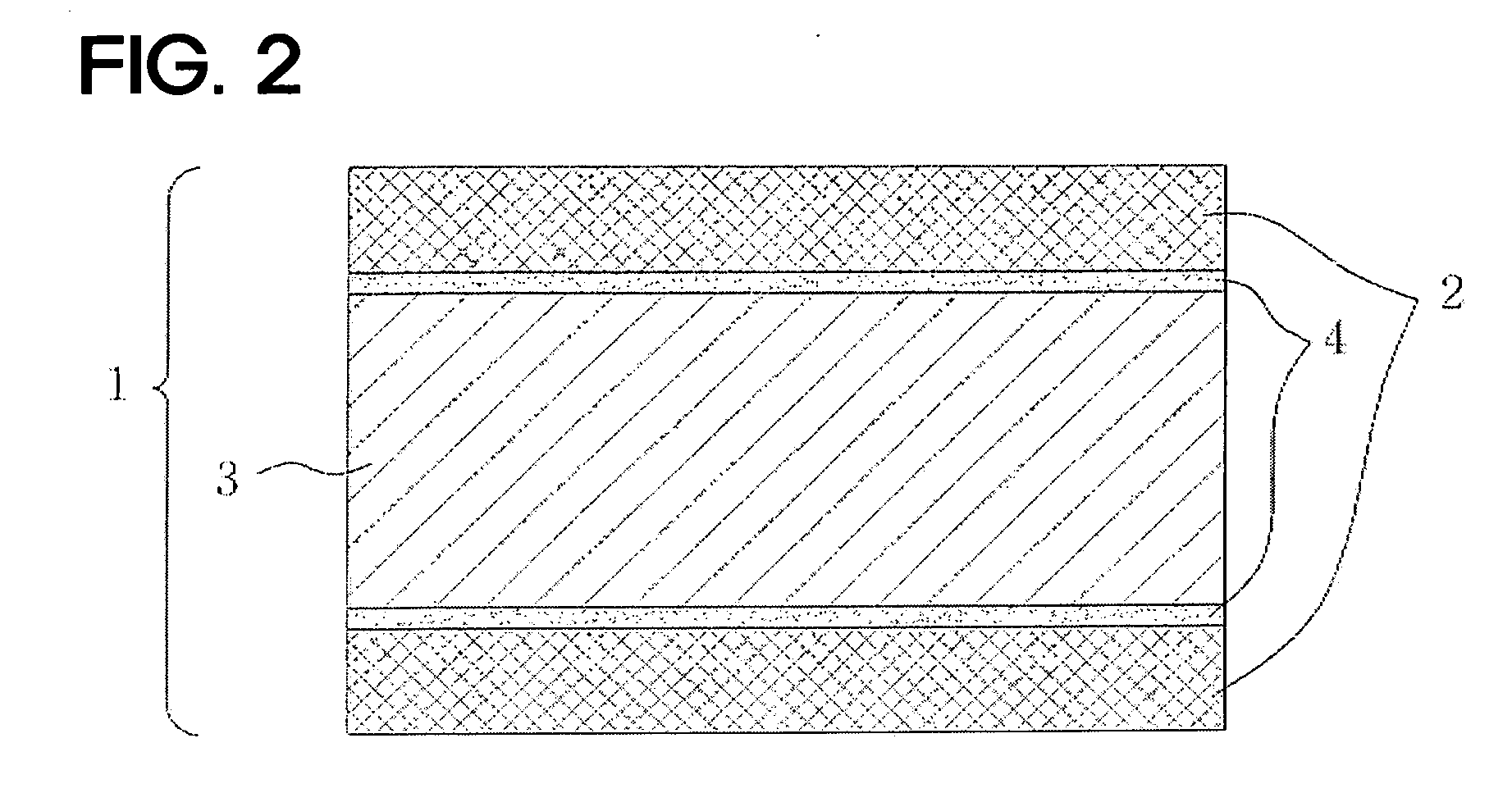Recording fabrics and manufacturing methods thereof
a technology of fabric and manufacturing method, which is applied in the field of recording fabrics, can solve the problems of inconvenient manufacturing, inability to meet the requirements of the customer, and inability to meet the requirements of the customer, and achieves the effects of low cost, excellent chemical and mechanical properties, and excellent printability and flatness
- Summary
- Abstract
- Description
- Claims
- Application Information
AI Technical Summary
Benefits of technology
Problems solved by technology
Method used
Image
Examples
example 1
[0043]A polyester-based fabric (1000 deniers, weft×warp=23×23) as a fiber substrate for manufacturing a recording fabric was prepared. Subsequently, 100 parts by weight (1 kg) of PET-G (Tsunami G S, Eastman Corporation, USA), 1 weight part (10 g) of Montan lubricant (WE-40, Clariant Corporation, USA), 0.5 weight part (5 g) of a phosphate-based antioxidant (Irganox B-561, Ciba-Geigy Corporation, Swiss), 0.5 weight part (5 g) of a UV absorbent (hydroxybenzotriazole), 10 parts by weight (100 g) of a fire retardant (antimony oxide), 5 parts by weight (50 g) of a filler (calcium carbonate) (H-calcium carbonate, LG Co. Ltd., Korea), 5 parts by weight (50 g) of a pigment (titanium oxide) (CR-834, Kerr McGee Chemical Corp., Australia), and 0.7 weight part (7 g) of an antistatic agent (nonionic surfactant) were mixed to prepare a composition for manufacturing a sheet layer. Then, after sufficiently gelling the prepared composition in a Banbury mixer, the gelled composition was injected into ...
example 2
[0044]A recording fabric was manufactured by the same method as Example 1 except that a polyethylene terephthalate (PET) film (SH22, SKC Corporation, Korea) (of which both surfaces are treated with a primer) having a thickness of 350 μm was used as a substrate layer.
PUM
| Property | Measurement | Unit |
|---|---|---|
| thickness | aaaaa | aaaaa |
| thickness | aaaaa | aaaaa |
| thickness | aaaaa | aaaaa |
Abstract
Description
Claims
Application Information
 Login to View More
Login to View More - R&D
- Intellectual Property
- Life Sciences
- Materials
- Tech Scout
- Unparalleled Data Quality
- Higher Quality Content
- 60% Fewer Hallucinations
Browse by: Latest US Patents, China's latest patents, Technical Efficacy Thesaurus, Application Domain, Technology Topic, Popular Technical Reports.
© 2025 PatSnap. All rights reserved.Legal|Privacy policy|Modern Slavery Act Transparency Statement|Sitemap|About US| Contact US: help@patsnap.com



